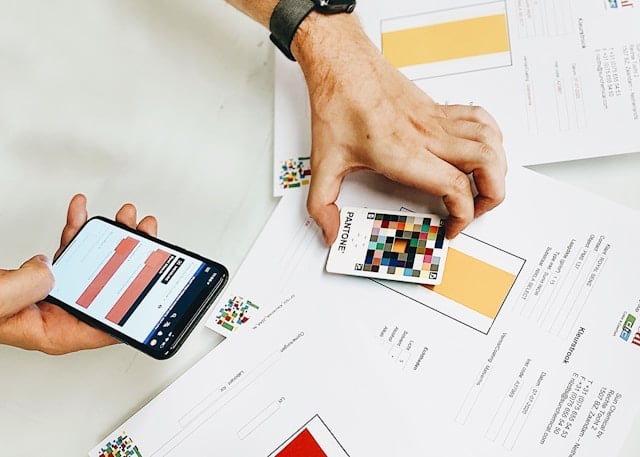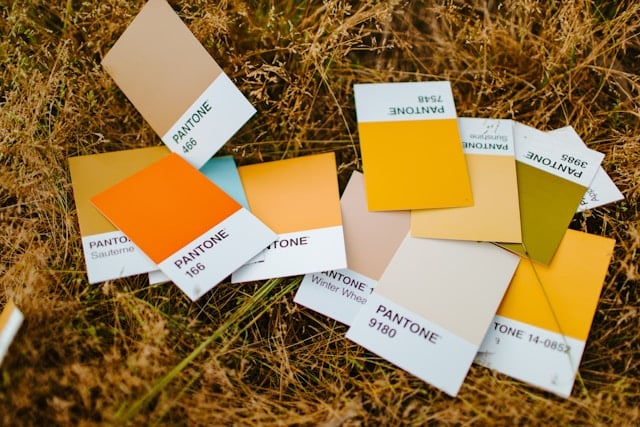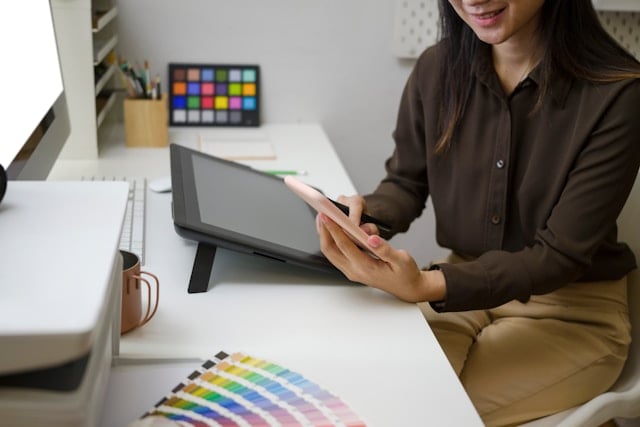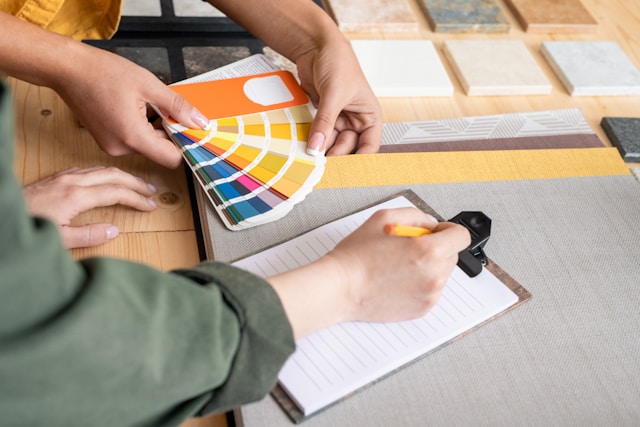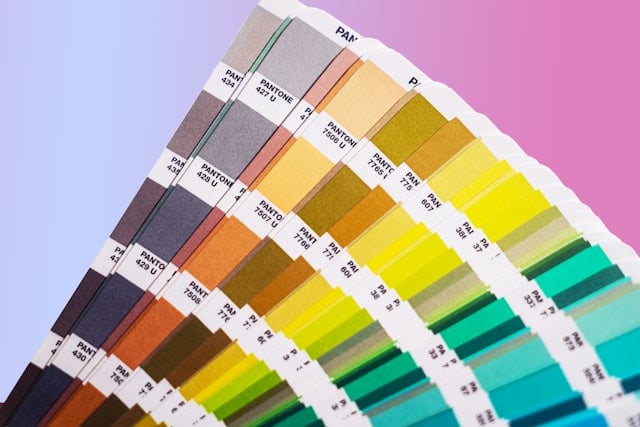Solutions for Overcoming Online Color Matching Challenges
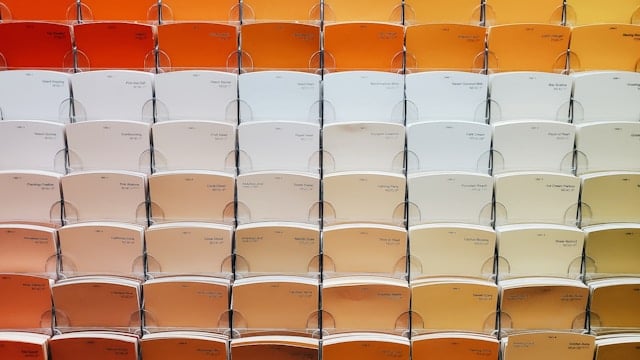
Accurate color representation is essential in architecture and interior design, where colors are carefully chosen to convey specific moods, enhance spaces, and bring harmony to an environment. While online shopping introduces unique challenges in color matching across materials, several effective solutions can help bridge the gap between digital previews and real-world colors. These solutions range from offering physical samples to leveraging advanced technologies that ensure more accurate color representation, enabling customers to make confident and informed choices.
1. Physical Samples: The Value of In-Person Color Assessment
Offering Color Swatches or Sample Kits: Physical samples remain one of the most effective ways to achieve true color matching in a project. By providing swatches or sample kits for key materials—such as fabric, wood, metal finishes, and paint—customers can see and compare colors in their actual environment. This allows them to view colors in both natural and artificial lighting, at different times of the day, and in context with other materials and textures within the space.
Encouraging Cross-Material Comparison: Sample kits are especially valuable when coordinating multiple materials. A client may want a fabric for a sofa to match the color of a metal fixture or the undertones of a wooden floor. Physical samples enable customers to assess how these materials look together, considering differences in finish, texture, and light reflection.
Affordable and Accessible Options: Some companies offer free or low-cost swatches for serious buyers, and many allow these samples to be returned or kept for reference. This can be a cost-effective solution for both buyers and suppliers, minimizing the risk of returns due to color mismatches and enhancing customer satisfaction.
2. Advanced Color Matching Technology: Bridging Digital and Physical Colors
Spectrophotometers and Color Scanners: Advanced tools like spectrophotometers and color scanners are essential for precise color matching across different materials. Spectrophotometers measure the exact color properties of a surface, capturing subtle variations in tone, lightness, and saturation that may not be visible to the naked eye. This data can then be used to create accurate digital representations or match colors across materials, such as matching a paint color to a fabric swatch.
3D Color Mapping: Some companies now use 3D color mapping to visualize how colors interact with various textures and finishes, particularly on complex materials like metals or textured fabrics. By analyzing how light and shadow play across a surface, this technology can provide a realistic preview of how a color will look in three dimensions, capturing the depth and nuances often lost in standard digital images.
Color Matching Services and Custom Production: Many high-end manufacturers offer custom color-matching services that use this technology to create bespoke shades for specific projects. This is particularly valuable for clients who want to achieve exact matches across different materials and finishes. By leveraging spectrophotometry and 3D color mapping, manufacturers can replicate a color across textiles, paints, and even metallic surfaces, ensuring cohesive color harmony throughout a space.
3. Using Universal Color Codes for Consistency and Clarity
The Importance of Color Systems (RAL, Pantone, CMYK): Universal color systems like RAL, Pantone, and CMYK offer a standardized approach to color communication, essential for matching colors across different materials. Each system is optimized for specific applications—Pantone for fabrics and print, RAL for paints and industrial coatings, and CMYK for printing. Using these codes as reference points provides a common language between suppliers, designers, and clients, reducing ambiguity.
Cross-Material Color Reference: Although each color system has limitations and may not translate perfectly from one medium to another, referencing universal codes can provide a strong foundation for color matching. For instance, if a client selects a Pantone color for upholstery, a designer can find the closest match in the RAL system for paint finishes, ensuring a cohesive look across the space.
Building Customer Trust through Transparency: Providing color codes alongside product descriptions reinforces transparency, allowing clients to independently verify or cross-reference colors if needed. For customers particularly concerned about accuracy, suppliers can offer a color-matching consultation to guide clients through color equivalents and discuss possible variations.
4. Interactive Visualization Tools: Enhancing the Online Shopping Experience
Augmented Reality (AR) for Real-World Visualization: Augmented Reality tools are becoming invaluable for online shoppers, allowing customers to "place" products within their space and see how they look in real time. AR provides scale and spatial context and enables users to view colors in their actual lighting environment. This is especially beneficial for larger items like furniture or wall finishes, where color and placement are key considerations.
3D Rendering Software: 3D rendering software with realistic lighting effects can help customers visualize color variations, texture, and material interactions in a simulated environment. These tools are ideal for products with intricate finishes, such as metals or wood grains, as they provide a closer approximation of how these colors will behave under various lighting conditions.
Virtual Design Consultations: Some online platforms offer virtual design consultations where customers can work with a design expert to create and adjust color palettes in real time. This service can include using AR or 3D rendering to fine-tune colors, providing a customized and guided approach to color selection. By integrating technology with expert advice, clients can make informed choices and avoid surprises.
5. Detailed Product Descriptions and High-Quality Imagery
Comprehensive Color Descriptions: Detailed color descriptions help customers interpret color beyond what they see on a screen. Descriptive language such as "cool undertones," "warm beige," or "deep slate with a matte finish" offers additional context, helping customers understand the qualities of the color in words. Descriptions can also highlight how the color may appear under different lighting or when paired with certain materials, setting realistic expectations.
High-Quality Imagery in Varied Lighting: Using high-resolution images with consistent lighting helps showcase a product's true color and texture. For colors that may shift under different lighting conditions, showing the product in multiple environments—natural daylight, warm indoor lighting, and artificial light—can help customers see how the color will look in various settings. Close-up images that capture texture and finish details (e.g., satin sheen on fabric or polished gloss on metal) further improve color accuracy.
Comparative Photos for Cross-Material Matching: Many online platforms include comparative photos that show products alongside complementary materials or popular pairings, such as a fabric swatch next to a matching metal accent. This approach provides a visual reference for customers aiming to match colors across different materials and gives them a more practical view of how elements will look when combined in a space.
By implementing these solutions, online platforms can offer a more reliable and satisfying experience for customers seeking to make accurate color selections across different materials. While no digital tool can fully replicate the experience of viewing materials in person, a combination of physical samples, advanced color-matching technologies, universal color standards, interactive tools, and clear descriptions brings online shoppers closer to achieving their ideal design vision. As color matching technology and visualization tools continue to advance, the gap between digital representation and real-world experience will continue to narrow, empowering designers and customers alike to make confident and informed decisions from the convenience of their screens. While these solutions significantly enhance the accuracy of color representation in online shopping, managing customer expectations remains crucial. In our next article, "Managing Customer Expectations," we will explore how transparent communication and personalized guidance can build trust and ensure satisfaction in the online shopping experience. By setting realistic expectations and offering expert support, businesses can foster long-term customer relationships. Continue reading to discover how to effectively manage customer expectations in the context of online color matching.


